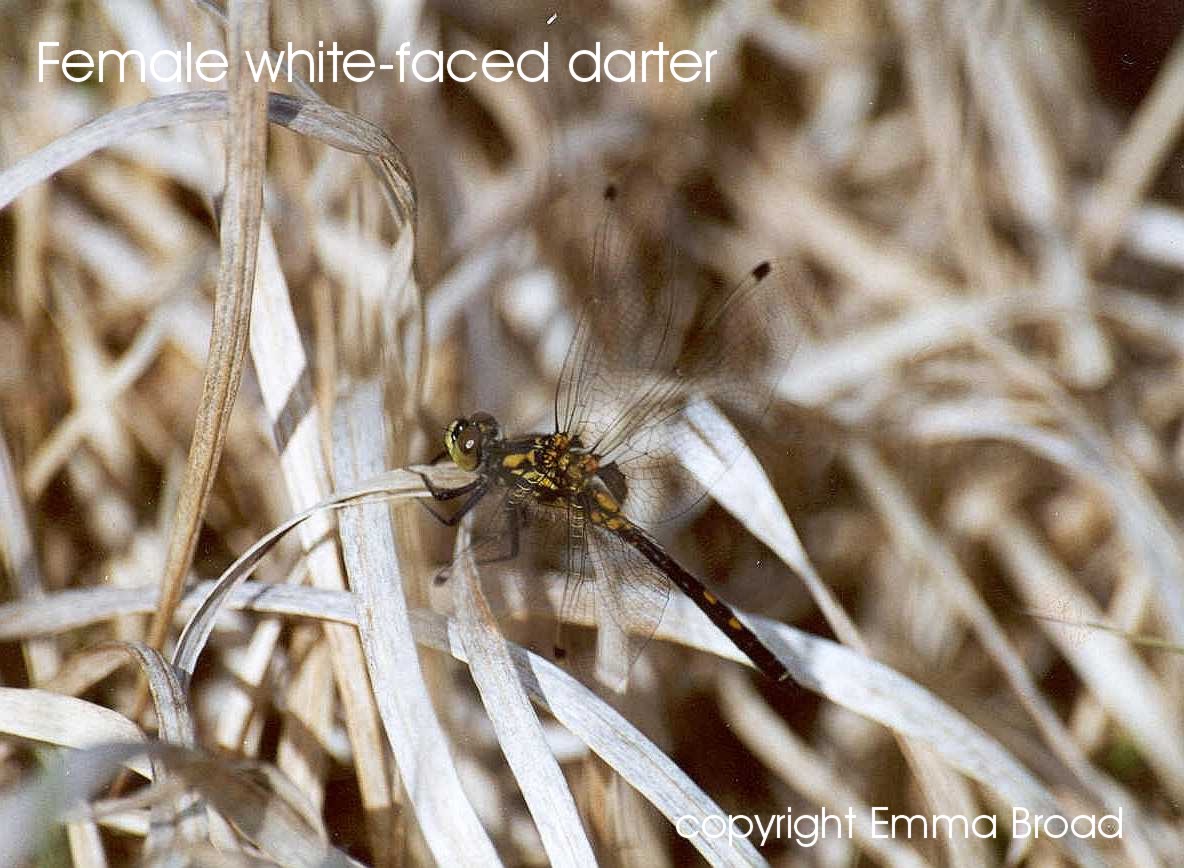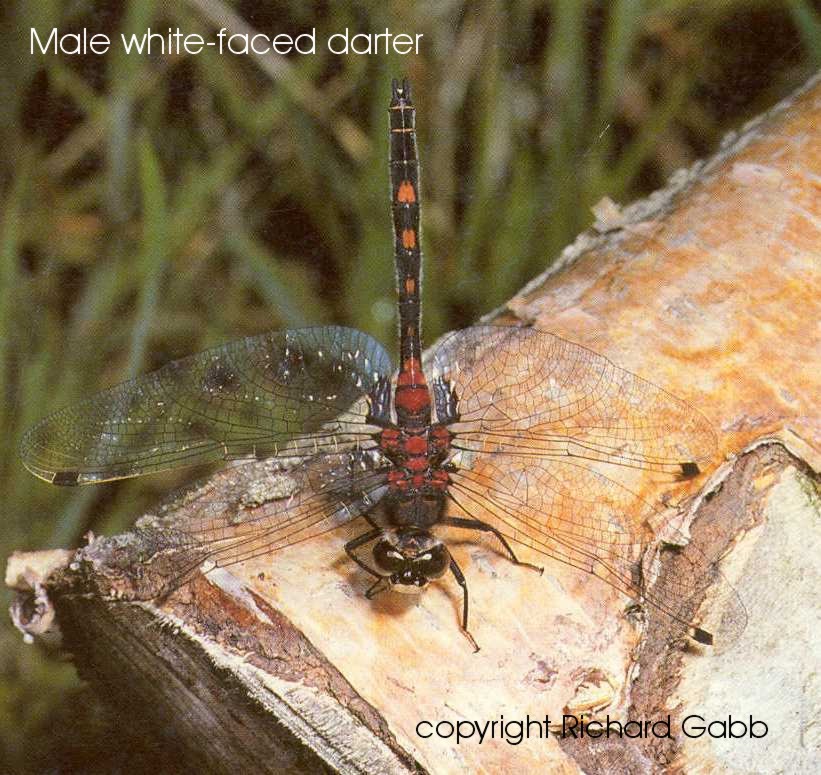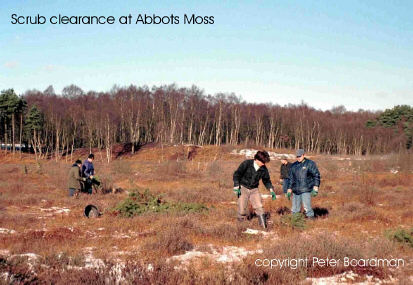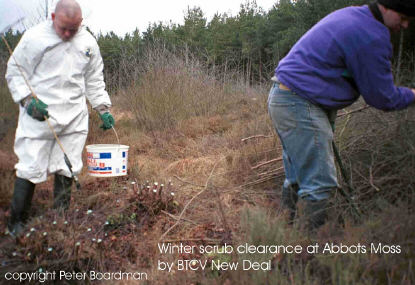WHITE-FACED DARTER (LEUCORRHINIA DUBIA)
LOCAL BIODIVERSITY ACTION PLAN
Links to associated HAPs
None
Current Status
In the United Kingdom this species has declined over the last 35 years. It has a disjunct distribution from Scotland to Surrey, occurring in only 30 10km squares between 1975 and 1990. Since then it has probably become extinct at at least one of these sites. In the Cheshire region it is found only in Delamere Forest, possibly now at three sites, Gull Pool, Abbott's Moss CWT Reserve and the Lily Pond in the Delamere Scout Camp. The declining population at Black Lake could now be extinct, with no records forthcoming of adults, larva or exuvia in since 1998.
The species favours shallow peaty pools with a considerable amount of healthy semi-submerged sphagnum cover. It also has a tendency for schwingmoor with nearby heathland and small trees.
Threats
- Loss of suitable habitat through scrub encroachment.
- Pollution of water bodies, including changes in pH levels.
- Damage to habitat through visitor pressure.
How are we helping to conserve the White-faced Darter in the Cheshire region?
- Ongoing monitoring at key sites.
Objectives, Targets and Actions
OBJECTIVES |
LOCAL TARGETS |
Improve the existing habitat to ensure a sustainable population and distribution of this species. |
To maintain a viable population of White-faced Darter at at least two sites in Cheshire. |
ACTIONS REQUIRED |
-
Continued monitoring of existing sites.
-
Survey of adjacent sites to monitor range expansion.
-
Management to prevent drying out and encroachment of scrub at existing and potential breeding sites.
-
Improve knowledge of hydrology in Delamere with a view to suggesting management at adjacent sites.
-
Raise awareness of the importance of white-faced darter and its reliance upon its required habitat.
-
Liase with landowners.
-
Liase with appropriate interest groups including relevant BAP Action Groups.
-
Monitor and assess habitat management trials at Gull Pool.
|
Progress so far
| 1997 - 2006 Action Completed |
-
During the winter of 1998/99 and 1999/2000 management work was undertaken at Abbott's Moss by the BTCV's New Deal team. Approx. 160 person days were spent removing invasive birch and willow scrub from the sites. Existing ponds were raked clear of vegetation and new shallow ponds created within the sphagnum. Management work continued in the winter 2000/2001.
-
Monitoring at Abbott's Moss has established that males held territory over some of the new ponds in 2000. By late June 2000 no females have been noted on Abbott's Moss.
-
Due to lack of funds this year and no project officer no work was undertaken during the 2001/2002 winter.
-
Species recording card for white-feced darter produced by Cheshire County Council and Vale Royal Borough Council.
-
Monitoring work continued on the established sites and a successful training day was held in 2002.
-
Continued survey work at Gull Pool and Shemmy and Abbott's Mosses in 2003. Only one individual reported.
|
How to find out more about the White-faced Darter
Vale Royal Borough Council White-faced Darter Species Recording card
British Dragonfly Society - www.dragonflysoc.org.uk/
Cheshire Dragonflies and Damselflies website - http://www.brocross.com/dfly/dfly.htm
Contact details
| LBAP Chair |
Paul Hill, Lepidoptera & Odonata LBAP Action Group
Phone: 0871 734 0111 |
References & Glossary
Gabb R & Kitching D (1992): The Dragonflies and Damselflies of Cheshire. Liverpool Museum and Galleries
Hill PM & Twist C (1996): Butterflies and Dragonflies a Site Guide. Arlequin Press, Chelmsford
Hill PM (1999): White-faced Darter (Leucorrhinia dubia) 1998 Survey Report. Cheshire Region Odonata LBAP AG.
Hammond CO (1985): Dragonflies of Great Britain and Ireland. Harley Books, Colchester
HMSO (1995): Biodiversity: The UK Steering Group Report. Volume I: Meeting the Rio Challenge, London
HMSO (1995): Biodiversity: The UK Steering Group Report. Volume 2: Action Plans, London
Merritt R (1996): The Atlas of Dragonflies of the UK. Institute of Terrestrial Ecology





